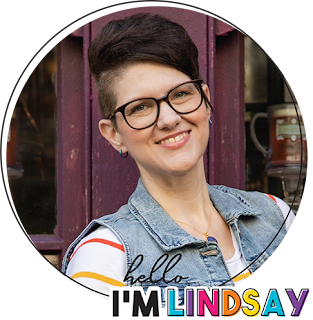I have struggled with anxiety for as long as I can remember. Worrying about school, making friends, taking tests, and loads of imaginary scenarios were just part of life. There's a stigma around admitting you are feeling anxious or depressed. I was also reminded that all kids have their worries and doubts, so I assumed that everyone was just as anxious as I was. In 2013, I shattered my leg, bringing my anxiety to a whole new level.
While I was on 3 months of bedrest with my broken leg, my 3 year old daughter (at the time) was an incredible help to me. At such a young age, she unfortunately also got to witness the darkest time in her own mother's life. It breaks my heart to know that some of her worries and anxieties have been brought on by her witnessing this ordeal, but I have also noticed that she is a lot stronger at this age than I ever was because of it. It has been a tough road, but I am no longer ashamed to admit that I can't work through this alone. Most importantly, I have come to realize that it's really okay to ask others for help.

Worrying isn't a bad thing. In fact, worries and fears keep us safe. Obviously, children’s worries are different than the worries of adults. But just like adults, kids also have their fair share of demands, expectations and new experiences they have to face. At times, those childhood worries can be very BIG, and at other times, very small. However, no matter how big or small the worries are, they are ALL important.
I've tried to make it a point to teach my daughter that it's okay to talk about our worries and anxieties - no matter how big or small. Being the imaginative and curious kid that she is, she comes up with all kinds of things to worry about. Sometimes she tries to be like me and puts on a brave face to get through. Other times I am the first person she will come to, unashamed of how silly a worry might sound so that we can work through it together.

How it works:
Write down your worries and fears.
Feed them to me - I’ll hold them for you!
We’ll get through this together!

Larger pieces of paper fill up the Worry Eater's mouth quickly. So I designed some "Worry Cards" that my daughter has loved using to write out her worries, anxieties and fears to share with Pomm. Hopefully your kids will enjoy using them, too.
Some things you should know before downloading:
*Artsy-Fartsy Mama printables are for PERSONAL USE ONLY.
*You may NOT modify, re-sell, redistribute, or claim the design as your own.
*Please do not remove the credits/watermarks.
*If you'd like to share this project, credit must be given to Artsy-Fartsy Mama & linked back to this post.

Talking about worries can sometimes be difficult for kids, so writing or drawing can be extremely helpful in opening up discussions. The Worry Eaters fit perfectly into that place between reality and fantasy by helping children cope with everyday worries in an extraordinary way. These printable cards are small (15 on the page), so kids can list a few worries, or be more descriptive about one in particular. They can also draw on the back! Parents may need to help younger children.

Each Worry Eater’s adorable zipper mouth provides children with a safe place to share their worries. After writing or drawing the worries, place them in the Worry Eater’s mouth so that the Worry Eater can hold onto them.
The act of physically placing that worry in the Worry Eater’s mouth is a great a way for kids to separate themselves from that worry or problem, giving them some time to “take a break” from carrying the weight of it. Those worries can then be shared with a parent to help your child face that worry, problem-solve solutions, and/or just acknowledge that the worry exists.
The act of physically placing that worry in the Worry Eater’s mouth is a great a way for kids to separate themselves from that worry or problem, giving them some time to “take a break” from carrying the weight of it. Those worries can then be shared with a parent to help your child face that worry, problem-solve solutions, and/or just acknowledge that the worry exists.

Zip up the mouth after placing the worries inside. Once your child has shared their worries with their Worry Eater, it is important that you take your child’s lead in what comes next. Do they want to let the Worry Eater hold onto the worry for a while to “take a break”? Or would they like to share their worry with you?
Working together with your child and their Worry Eater, you can begin some problem solving. This involves finding creative ways to overcome these worries or changing it to something more manageable. You can also work on developing different coping strategies with your child. Since worries are a part of life, you and your child can find ways to be and feel successful when experiencing worry.
Working together with your child and their Worry Eater, you can begin some problem solving. This involves finding creative ways to overcome these worries or changing it to something more manageable. You can also work on developing different coping strategies with your child. Since worries are a part of life, you and your child can find ways to be and feel successful when experiencing worry.

**It is important to remember that we as parents cannot fix everything. PLEASE don’t hesitate to seek help from your family doctor or pediatrician if you have any concerns about your child's worries. Your doctor will be able to discuss and collaborate with you on the appropriate plan for you and your child and their individual needs.**
For more information about Worry Eaters, visit them on Facebook and Twitter. You can purchase Worry Eaters on their website.











I love this! Thank you for being so open and honest about this ever so common issue. I'm going to their website now!
ReplyDeleteThis is a GREAT idea!!
ReplyDelete